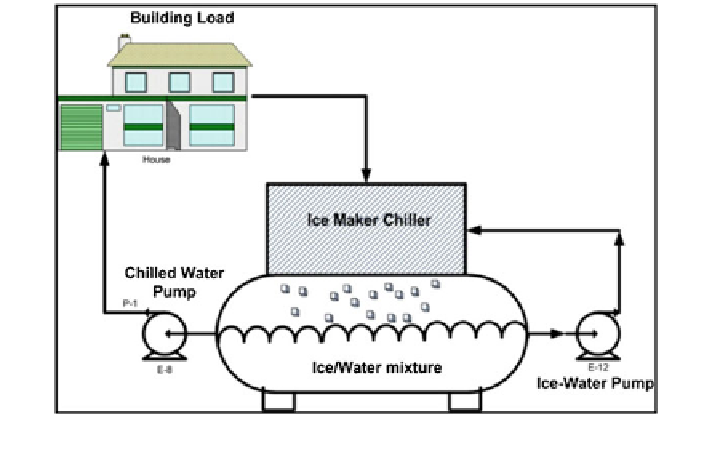Civil Engineering Reference
In-Depth Information
• lower fluid temperature results in the decrease in the overall cooling perfor-
mance of the system,
• inherent pressure drop in the pumping systems influences the flow rates of fluid,
thereby the net heat transfer rate is limited, and
• operational and maintenance costs of such system are normally justified only
above several hundred tons of cooling capacity.
5.3 Ice Storage Using Harvesting Technique
This is very similar to the external and internal ice melt techniques, but the cooling
coil (evaporator) contains a refrigerant in place of the glycol solution. The
refrigerant coils embedded inside the storage tank extract the heat content from
the flowing water. The chilled water, at a particular instant of time, changes its
phase into ice, which eventually gets deposited over the surface of the cooling coil.
The built-up ice is then removed by passing a stream of hot gas through the
cooling coil at equal intervals of time (usually 25 or 30 min).
The thermal energy stored in the flakes of ice together with the chilled water is
utilized to cater the cooling load demand during on-peak conditions in building.
The schematic representation of the ice storage using harvesting technique is
shown in Fig.
15
(Yau and Rismanchi
2012
).
Fig. 15
Schematic diagram of a typical ice harvesting ITS system (Yau and Rismanchi
2012
)

